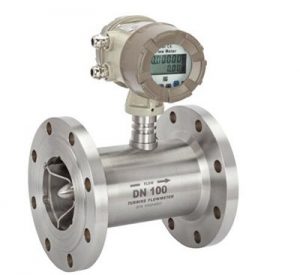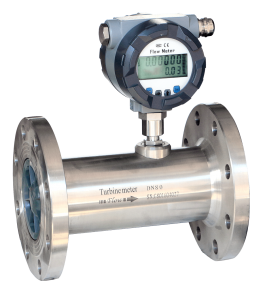Turbine flowmeters are widely used. They can be used in measuring instruments for trade settlement of crude oil, natural gas, and valuable fluids, and can also be used in product production process control, as the feedback signal provider and controller of the control system.
Turbine flowmeter has high accuracy, especially good repeatability, so it has the characteristics of a standard flowmeter as a standard meter flow device and can be used as a standard meter or as a standard for periodical verification of a flow standard device. International and domestic value comparisons often use turbine flowmeters as transmission standards.

The applications of turbine flow meters are summarized as follows:
(1) Trade measurement: natural gas transmission and distribution network, urban natural gas, etc.
(2) Process control: petrochemical, electric power, industrial boilers, etc.
(3) The standard device is used as a standard meter. Generally, the accuracy level is not less than 0.2. The comparison of the turbine flowmeter, orifice flowmeter, and ultrasonic flowmeter is shown in Table 2-2.

| Compare items | Orifice flowmeter | Turbine flowmeter | Ultrasonic flowmeter |
| Max flowrate m3*h-1 | ≤100000 | ≤25000 | ≤200000 |
| Maximum turndown ratio | 5:1 | 20/30 :1 | 150:1 |
| Laboratory accuracy | ±(1~2)% | ±(0.5~1)% | ±(0.5~2)% |
| Pressure loss | Big | Small | Small |
| Pulsating flow measurement | No | Yes | None |
| Flow velocity distribution influence | Sensitive | Not Sensitive | Sensitive |
| Front straight pipe requirements | (30-100)D | (2-5)D | (10-30)D |
| Influence of medium temperature | Big | Small | Small |
| Influence of medium humidity | Big | Small | Small |
| Influence of medium density | Severe | Small | Small |
| Influence of medium composition | Severe | None | None |
| Operating cost price | High | Middle | Low |
| Price | Middle | Middle | High |
| Advantages | Suitable for large flow, high precision |
Suitable for various flow ranges |
The pressure loss is small, and the influence of temperature and pressure on the measurement is minimal |
| Disadvantages | The hole is easy to wear and requires high-precision accessory equipment |
There are moving parts in the meter, which are easy to wear |
The size is limited to more than DN80, which is more sensitive to the flow field, and the dirt on the probe will cause errors |
